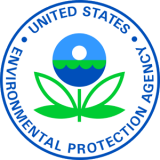EPA Awards $2.5 Million for Iowa Farm-Focused Projects to Improve Water Quality
Environmental News
FOR IMMEDIATE RELEASE

-
Iowa Department of Agriculture and Land Stewardship, $1,000,000 - Fostering Opportunities for Water Quality Wetlands Demonstration Project
- Practical Farmers of Iowa, $979,915 - Strengthening Farmer Networks to Improve Water Quality and Wildlife Habitat in the On-Demand World
- Iowa Department of Natural Resources (IDNR), $559,258 - Mentoring for Success in the Beaver Creek Watershed
“EPA is proud to support the leadership of farmers and their innovative approaches to improve water quality while working to fuel and feed the world,” said EPA Administrator Michael S. Regan. “EPA is committed to meaningful partnerships with farmers to advance sustainable agriculture practices while creating healthy, clean, and safe environments for all.”
“It is critically important that we work with states, nonprofits, and farmers to reduce agriculture-related nutrients in our waters,” said Acting EPA Region 7 Administrator Edward H. Chu. “The Farmer to Farmer program generates ideas and action by targeting funds on local solutions where we can make the greatest difference. I’m pleased that this funding will go to educate and empower farmers to implement best practices in their operations to reduce nutrient loads and improve water quality in the Upper Mississippi River Basin, including the North Raccoon River and Beaver Creek watersheds.”
“There’s a tremendous amount of conservation work underway across the state of Iowa, thanks to the commitment of farmers and landowners and the financial and technical support of our public and private partners, including the EPA,” said Iowa Secretary of Agriculture Mike Naig. “These federal dollars allow us to continue building upon successful soil health and water quality projects in priority watersheds. Improving water quality is a difficult task, but we’re continuously learning and testing new science-based practices to scale up our efforts. This EPA grant allows us to test a new type of wetland that may be able to be used in more locations, which would allow us to make a greater impact on water quality in Iowa and downstream.”
“The DNR is grateful to be a part of this unique opportunity to build upon the great work in the Beaver Creek watershed,” said Lori McDaniel, IDNR Water Quality Bureau chief. “This grant will help us connect mentors with landowners and provide the necessary tools and resources to get nutrient management practices on the ground much quicker.”
“The Beaver Creek WMA is very fortunate to be able to use EPA’s Farmer to Farmer grant to promote soil health, edge of field practices, and floodplain restoration with the farmers, landowners, and communities in the Beaver Creek watershed,” said Chuck Wenthold, chair of the Beaver Creek Watershed Management Authority, who will partner with IDNR to complete the project.
“Practical Farmers of Iowa is excited to work with the EPA and our state-level partners to engage farmers across the Mississippi River Basin in farmer-led efforts to improve water quality and wildlife habitat," said Sarah Carlson, strategic initiatives director, Practical Farmers of Iowa. "At PFI, we've seen how our farmer-to-farmer learning model empowers farmers to make changes that benefit soil, water, wildlife, and farm profitability. With this EPA funding, we'll be able to help more farmers tap into this powerful network and get the support they need to add cover crops and small grains, which are proven ways to improve water quality, soil health, and wildlife habitat while making their farms more resilient. ”
In the Gulf of Mexico watershed, farmers manage millions of acres of privately held working lands. While farmers are working in this watershed to provide the food, fuel, and fiber for the world, they are also managing challenges across the landscape to minimize pollution occurring from a variety of locations known as “nonpoint sources,” specifically the excess nitrogen and phosphorous that can enter water bodies through runoff or soil erosion. Excess nutrients delivered to the Gulf of Mexico come from sources across the entire watershed, many of which are nonpoint sources from the agricultural landscape. Farmers are often the first line of action in reducing nonpoint source pollution and have developed innovative practices and models to share their knowledge with others.
The collaboration of a wide range of stakeholders and organizations across an entire watershed is vital to reducing nutrient pollution to our waters. Farmers can play an important leadership role in these efforts when they get involved and engage with their state governments, farm organizations, conservation groups, educational institutions, nonprofit organizations, and community groups.
Background
The Farmer to Farmer grant funding is available to develop innovative practices within farming communities, measure the results of those practices, and identify how the practices will be incorporated into farming operations. Under this grant program, proposals will carry out project activities using one or more of the following methods: surveys, studies, research, investigation, experimentation, education, training, and/or demonstrations.
This grant program is managed by the Gulf of Mexico Division, which is a non-regulatory program of EPA founded to facilitate collaborative actions to protect, maintain, and restore the health and productivity of the Gulf of Mexico in ways consistent with the economic well-being of the region. To carry out its mission, the Gulf of Mexico Division continues to maintain and expand partnerships with state and federal agencies, federally recognized tribes, local governments and authorities, academia, regional business and industry, agricultural and environmental organizations, and individual citizens and communities.
For more information, visit EPA’s website.
# # #
Learn more about EPA Region 7
View all Region 7 news releases
Connect with EPA Region 7 on Facebook: www.facebook.com/eparegion7
Follow us on Twitter: @EPARegion7
